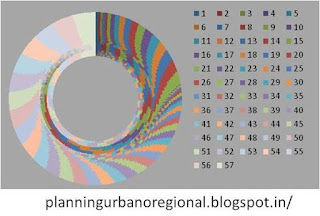Radical possibilities if
they get it right!
The
single largest advantage of online environment over urban environment is that online environment is spontaneously morphing and mutating. It’s a spontaneous
collaborative environment with user generated content, individually conceived
collective community efforts, within a larger set of easy to understand rules
with basic governance and minimal intervention. Best part is that it all comes
unasked. All you need to do is to create an online platform intuitive and
sticky enough to appeal to masses, leaving rest up to user’s creativity. Users
are motivated and willing enough to spend their own time and money and whatever
it takes to contribute to this global phenomenon, mostly unasked mostly free,
they are even willing to pay for it in some cases, be it social or professional
networking platform (Sharing/ Facebook/ Twitter/ Linkedin) or cloud environment
(Storage/ Backup) or virtual collaborative tools (Building/ Sharing/ Docs),
open source programming environment (Building Blocks/ Learning/ Sharing) or
just a platform to share their own piece of mind or simply converse (blogs/Forums). Amazingly this ever-thriving virtual environment with apparently
intangible inputs even gets translated into tangible outputs. A
self-sustainable virtual community environment with little bit of nuisance andchaos which can be managed and currently being managed through series of governing
and control instruments! Wonderful!
Let’s
talk about urban environment a bit, parallel to online environment. Let’s
identify the obvious constraints and major differences. Urban environment is
tangible in nature, things like - raw material, physical infrastructure,
resource intensive, capital and labor intensive and then there are governance
and management issues since resources are limited and stakes are high. Let’s
see some common somewhat overlapping traits; both urban and online environment
needs basic physical infrastructure in place some of which are common as well
(Power, Water, transport VS Telecom infrastructure/ Wi-max/ Wi-Fi etc. with
common later part), both environment require serious manpower to build, sustain
and grow, they both demand control and security, both need a heterogeneous mix
of business models as well and so on. What comes to mind now? What you are thinking
right now absolutely makes sense - with so much of similarities while having
“people” and “community” at center stage in both cases, why haven’t we explored
the mutual learning possibilities and why we haven’t been able to translate the
online functional learning experience into building of physical community
called “City”.
Can
we do it? Think so; at least we can give it a try! By establishing a logical, statistical,
mathematical and philosophical co-relation between the two, leaving possibility
to weave the city fabric and its functionality further in future! This analogy
of physical (urban) and virtual (online) environment presents a model of
self-evolving self-sustainable community further translated into urban
community where every member of community is contributing to build the “physical
environment”, though they are already doing it “Socially” well at present. Can
we give a community or region enough flexibility to shape its own environment,
customizable up to their personal needs and choices without hampering the
public interest, with basic infrastructure built in place to start with, a set
of basic rules to play with, some basic building blocks to kick-start, with
flexibility to select platform and tools of their choices to build, with a governing,
supportive and helping hand, watchful eyes as well as security and rescue
mechanism in place, with some kind of layered public, community and personal
finance model and so on, all this flexibility within a controlled and
transparent environment. Reinforced by supervisory control and incentive
instruments! Building with a vision of “sustainable community” and “fairness ofopportunity” at center stage! Fortunately we have analytical tools, informative
resources and accumulated experience of mankind today which can help extract
and derive and establish useful correlation between the urban and online
environment paving a way for better and sustainable future!












